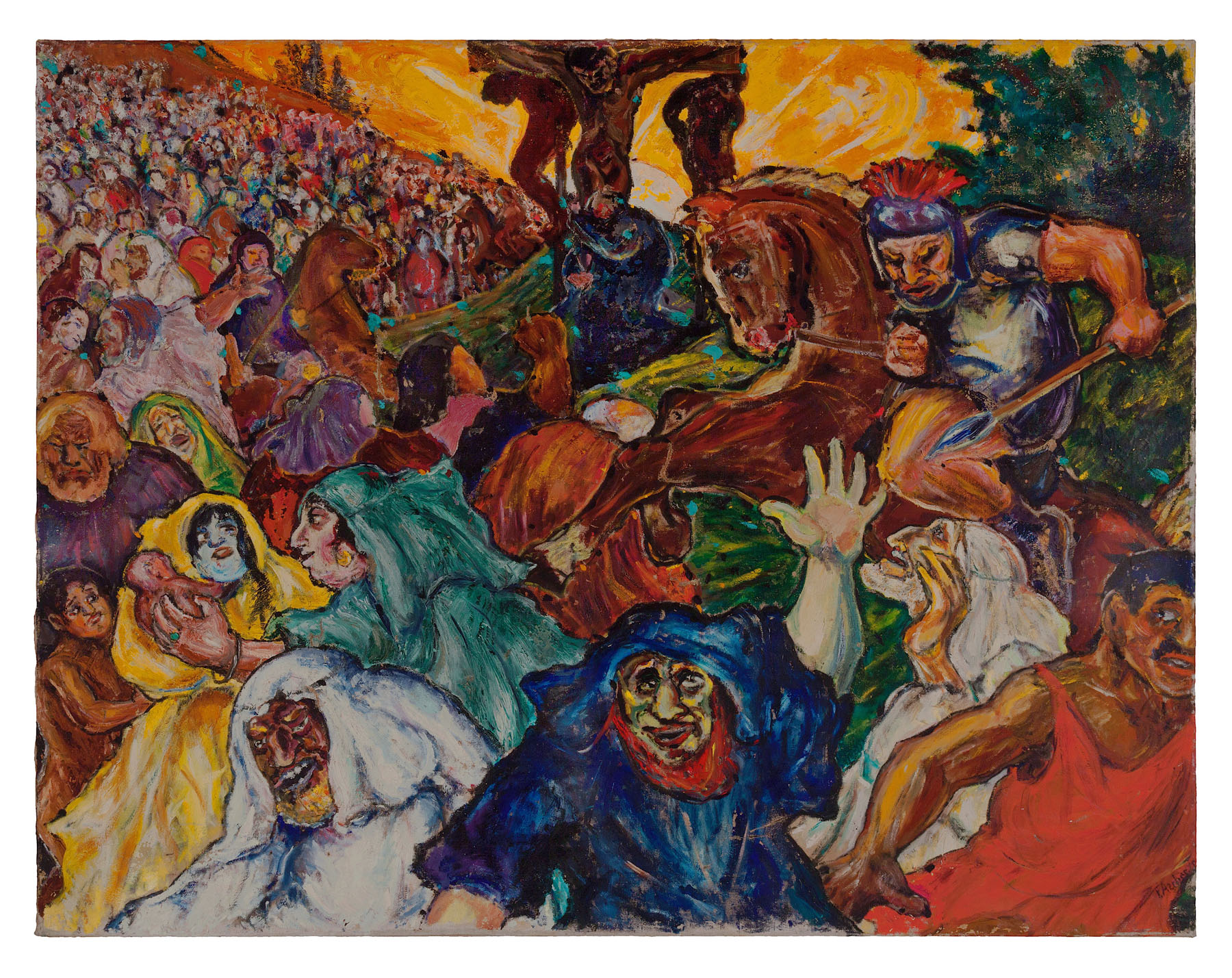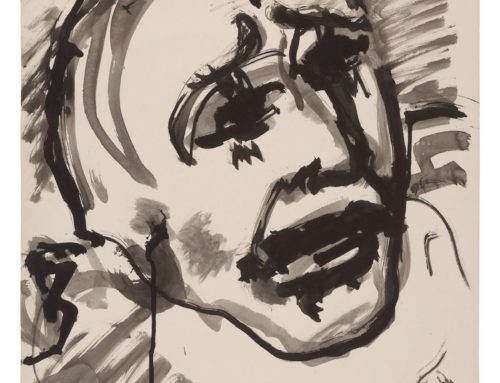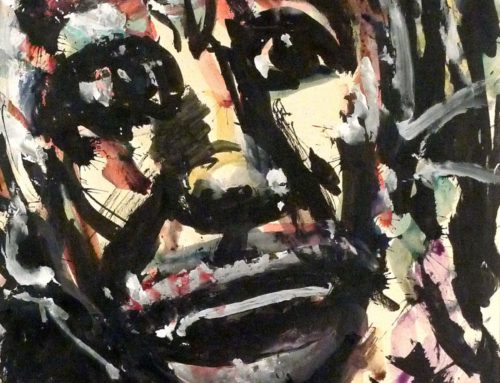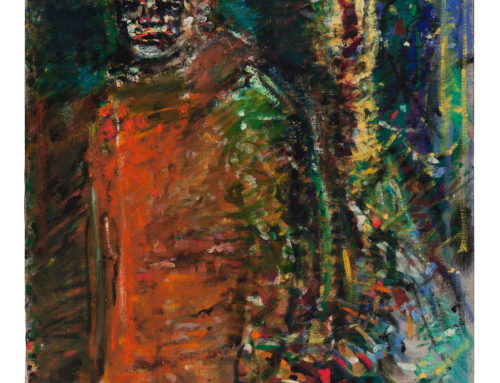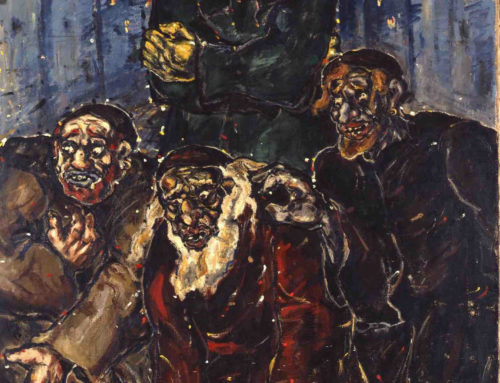“Golgatha” (“Golgotha”), 1915
What marks this crowded vision of Golgotha as different from what one might recognize from traditional depictions of this subject? Where are the images of Christ and the two thieves placed within the image’s composition, and are they in the light or in shadow? How does this last feature affect the stand out/disappear nature of their dark brown-black hue, both against a glaring, bright yellow sun that is ambiguously rising or setting and against the rest of the figures and landscape elements in the painting with their bright pigments? Just below the foliage is a Roman soldier holding a spear—who might this be?—on horseback who appears to be chasing the foreground figures away; his facial expression is, interestingly, virtually identical to that of the Christ. What is it that the savior shares in common with this Roman pagan soldier—whose countenance one can discern even in its darkly shadowed state?
People fleeing in a chaotic array all share two traits: they are enveloped in boldly-colored robes and their faces offer the sort of features, particularly their noses, which reflect generations of Northern European stereotypical depictions of Jews. If we view Ascher as a Christian painter, this is a remarkable image not only for its expressive power but even more so for its emphatic focus on all the anonymous figures, (rendered as a Christian might render Jews), rather than on the crucified Christ or on figures like the Three Marys, Joseph of Arimathea, Nicodemus or John the Evangelist: if any of these individuals is present it is far from obvious. If we view Ascher as a Jewish painter, then he is one of a handful of Jewish artists to focus on the figure of Jesus between about 1870 and 1940. Compare this image with sculptures of Christ by Mark Antokolsky, Moses Jacob Ezekiel, and Marc Chagall: aside from diverse media (sculpture versus painting) what do the images created by these Jewish artists offer regarding their respective worlds compared both to each other and to the pre-World War I world of Fritz Ascher?


